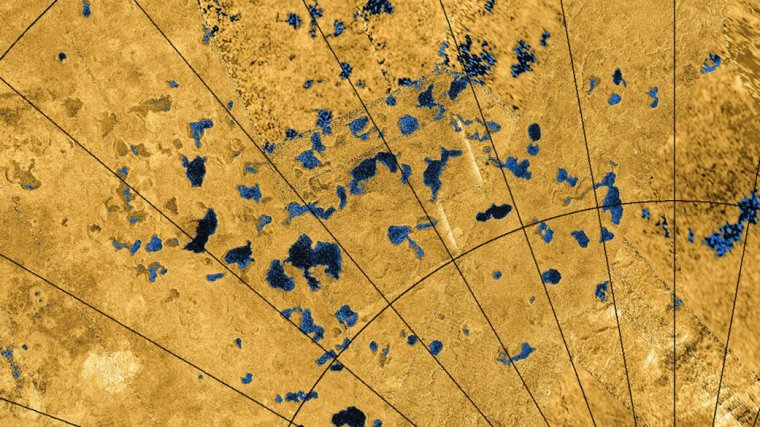| News / Space News |
The Mysterious 'Lakes' on Saturn's Moon Titan
NASA | JUNE 20, 2015
Saturn's moon Titan is home to seas and lakes filled with liquid hydrocarbons, but what forms the depressions on the surface? A new study using data from the joint NASA and the European Space Agency Cassini mission suggests the moon's surface dissolves in a process that's similar to the creation of sinkholes on Earth.

Radar images from Cassini reveal many lakes on Titan's surface, some filled with liquid, and some appearing as empty depressions. ![]()
Apart from Earth, Titan is the only body in the solar system known to possess surface lakes and seas. But at Titan's frigid surface temperatures -- roughly minus 292 degrees Fahrenheit -- liquid methane and ethane, rather than water, dominate Titan's hydrocarbon equivalent of Earth's water.
Cassini has identified two forms of methane- and ethane-filled depressions that create distinctive features near Titan's poles. There are vast seas several hundred miles across and up to several hundred feet deep, fed by branching, river-like channels. There also are numerous smaller, shallower lakes, with rounded edges and steep walls that are generally found in flat areas. Cassini also has observed many empty depressions.
A team of scientists discovered that Titan's lakes are reminiscent of what are known as karstic landforms on Earth.
The scientists found that it would take around 50 million years to create a 300-foot depression at Titan's relatively rainy polar regions, consistent with the youthful age of the moon's surface.
YOU MAY ALSO LIKE


